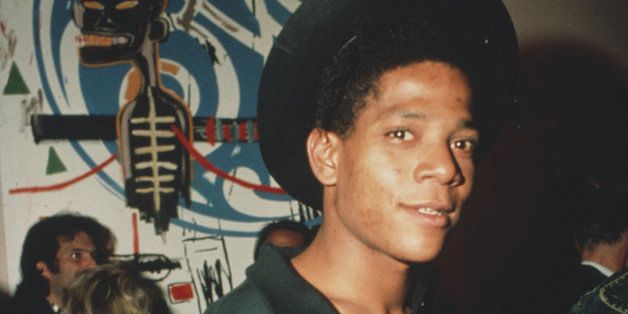
On Friday morning, I exchanged New York's winter for Brazil's summer. As per my usual back-and-forthing between the U.S. and Brazil, I've just arrived in São Paulo for a six-week stay.
There's so much happening right now on São Paulo's art scene! Every gallery and museum is making a final hurrah for the year, with great exhibitions and other events. Within two hours of touching down I was scurrying happily among museum openings, curatorial tours, artist studio visits, gallery openings, and a fascinating conference on the Lebanese diaspora in Brazil. You can feel the pace quickening practically hour by hour, as all the activity leads up to a two-week break that the entire country will begin on Saturday, December 21.
In the midst of all this has been the release of "Basquiat: First Impressions," my cover story on Jean-Michel Basquiat for Dasartes, Brazil's leading art magazine. The issue just hit the newsstands and I must say it looks great. Basquiat will be the subject of a major exhibition to be mounted next August and September in Rio de Janeiro's Centro Cultural Banco do Brasil museum. It will be the very first museum show of Basquiat's work in Brazil -- and the thought that's been resonating in my mind since I wrote the piece, a month ago, is that this is a big moment in Basquiat history -- not just for Brazil, but for the world. It's the moment that marks the turning point at which the acceptance accorded a "bad boy" and a "wunderkind" gives way to the respect due a tragically short-lived master whose works are embraced in the market and in art history next to those of Picasso and Warhol.
Built on probing interviews with those who knew Basquiat best -- including Annina Nosei, the artist's first dealer; Dieter Buchhart, the Brazil show's curator, and Richard Marshall, who curated the artist's first retrospective for the Whitney Museum, back in 1992 -- the Dasartes article has spurred a growing project in which I am interviewing art world notables about their first impressions of the artist and his work. Included so far is a thoughtful interview with Swiss curator Bruno Bischofberger, and soon I'll be talking with notable collectors Lenore and Herb Schorr, among others.
Basquiat's first dealer Annina Nosei (left) and curator Dieter Buchhart (right)
When I asked curator Buchhart what he expected Brazilians to find so revealing in this exhibition, and why he was looking forward to seeing this work in the context of Brazil right now, he noted that Basquiat's ability to deal with racism, class, capitalism, music and sports echoes important national themes and engages Brazil's diverse audiences.
"Basquiat goes over the border that separates high culture and general audiences," mused Buchhart. "He speaks to people's heart. And Basquiat seems to be relevant to a new generation. I saw this in my Paris show in 2010 at Musée d'Art Moderne de la Ville de Paris, when they received 360,000 visitors, which was the highest attendance in the museum's history."
Obviously the work resonates with expressions of the African diaspora, but the appeal of Basquiat in Brazil seems to go even deeper. Brazil itself represents a new cultural ecosystem that Basquiat might have reveled in. In a way, the country now is like the vision the artist saw and captured in his paintings -- a world incorporating all the mix and vibrancy of the street, the resonance of history, and the chaos, pain and grandeur of life.


